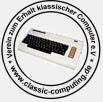Hallo zusammen 
after some good time letting it rest I tried to start again my Alphatronic and unfortunately got the following message from MOS boot:
Der Inhalt kann nicht angezeigt werden, da du keine Berechtigung hast, diesen Inhalt zu sehen.
Seems that the 48K RAM is defective since TOPRAM is detected as 40FF.
Even if there are alternatives to build a 48K or 64K board even simpler than the original design by using SRAM, my first idea would be to try to fix the defective board. The problem is that with the backplane design is quite difficcult and even risky to measure on the board pins directly. So first I will share here my observations and lets see if with your help and experience we can find out what the problem may be.
My first question is how does MOS figure out what is the size of the RAM. I guess it probably tries to write/read on the different addresses until the values written and read differ?
I tried to experiment a bit with the MOS commands to fill and display memory. I got surprised by the fact MOS allows me to fill memory from C000 onwards (I guess this belongs to the 16K memory board) and seems to work okey:
Der Inhalt kann nicht angezeigt werden, da du keine Berechtigung hast, diesen Inhalt zu sehen.
But trying to write to lower positions (the ones in the failed card) returns an error (maybe MOS tries to read the value back and reports error if it doesn't match?). On the other side, trying to display memory in the 4000-BFFF range provides a pattern that seems interesting at least:
Der Inhalt kann nicht angezeigt werden, da du keine Berechtigung hast, diesen Inhalt zu sehen.
As you can see the reported values are normally equal to the 8 lower bits of the address. I don't know if this can be related to the electronic design of the board or to some pattern MOS uses to check the RAM but seems to happen also on C000 if I remove the 16K board. It's also noticeable how not always the value is the expected one but some bits are changed (normally the lsb).
Another thing I was wondering: does the 16K board needs the memory controller in the 48K one to function? Or is it completely autonomous: I've seen there is a good deal of logic chips on the 16K board (besides the RAM chips themselves) but I didn't see any way to generate the -5V on that board, so my guess is that the 48K board provides it to the backplane and the 16K board uses it from there, makes sense?
Regarding other checks, I soldered cables to the regulator that generates -5V from -12V on the 48k memory board and seems to provide -5V properly. All voltage lines are properly connected to all the RAM chips and after having the board working for a while I didn't notice any chip that was particularly hot. On the contrary, only one column of RAM chips seem to get a bit warm whereas the others are quite cold.
I also tried to switch the 48K and 16K to see if there was any problem in one of the backplane slots, but the result is the same. I checked that all the voltages are reaching both backplane slots properly.
I'm open to any ideas, reports from similar behaviors and of course feedback about what I've written here, what probably can be wrong. 
Viele Grüße,
Manuel
![]()

